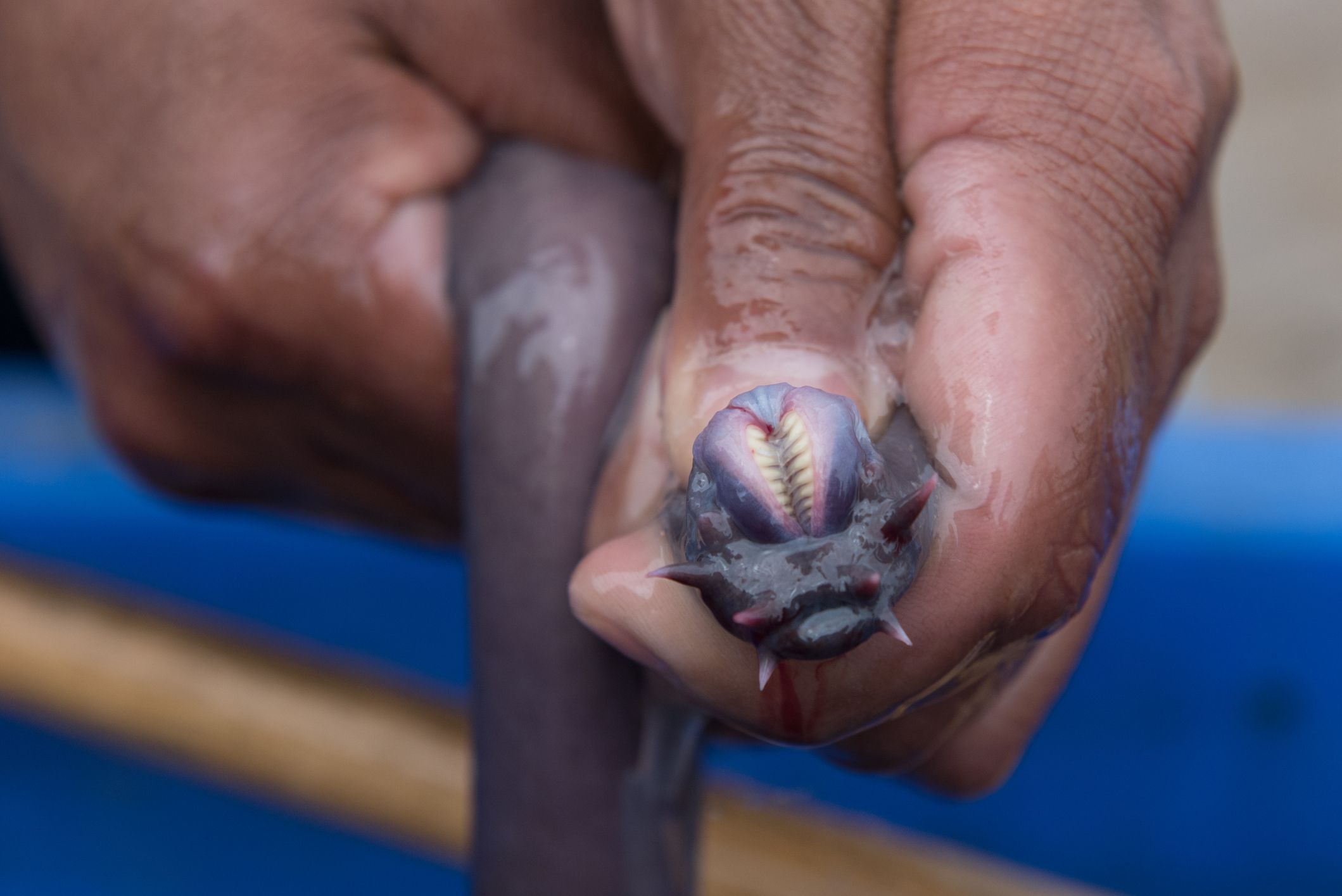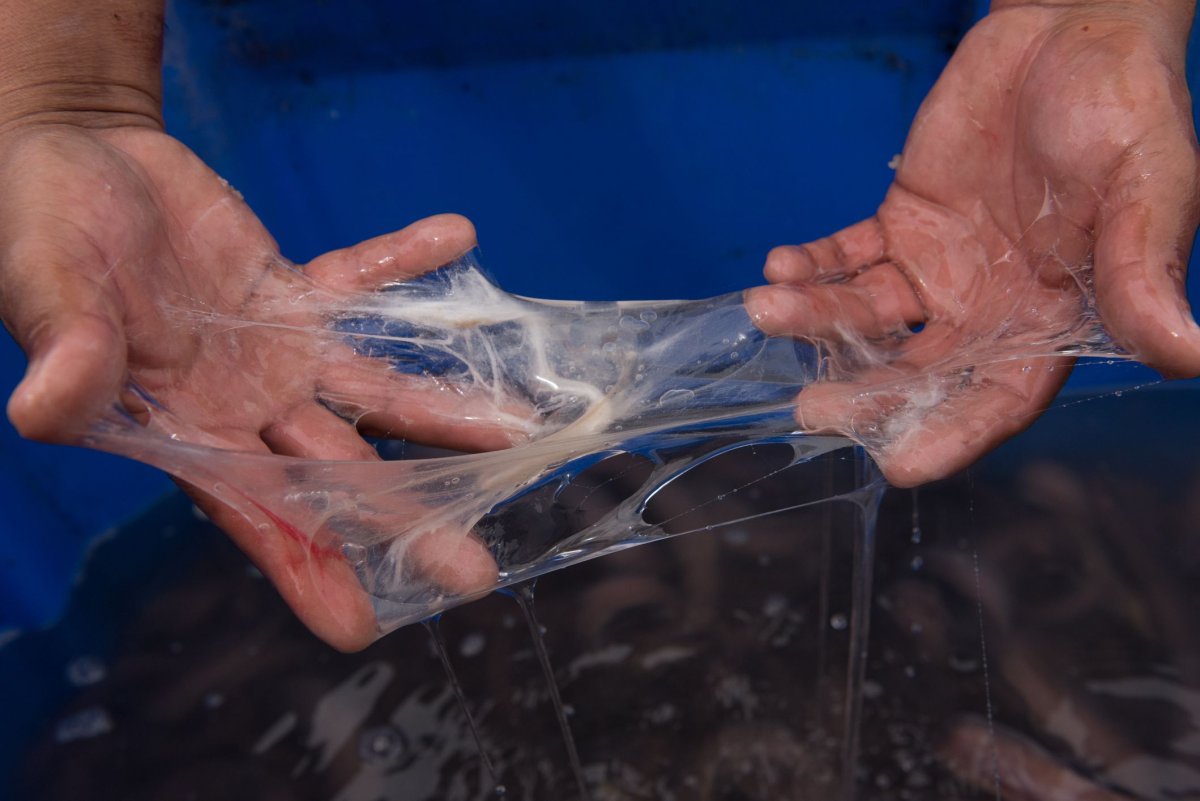
Hagfish are deep-sea eel-like creatures that, when attacked, produce a slime that explodes out to choke their assailant. The slime forms from a small amount of mucus that is ejected from the creature's glands. As it enters the water, it expands by a factor of around 10,000 and turns into a mass that clogs up the gills of its predators.
The slime is of interest to scientists as it extremely strong, stretchy and very thin. If researchers could develop a synthetic version, it could have far-reaching applications—especially for the military. The U.S. Navy is currently investigating its potential as a form of defense.
Read more: Hawaii seal gets eel stuck up nose
Over recent years, scientists have been looking closely at the mechanical and biochemical components of hagfish slime. However, the way the slime is rapidly deployed is poorly understood.
In a study published in the Journal of the Royal Society Interface, researchers have now started to figure out how the slime unravels. The team, led by Gaurav Chaudhary of the University of Illinois, looked at the secreted thread cells—known as skeins.
"Slime is formed when a hagfish secretes a small quantity of biomaterial through it slime glands," Chaudhary told Newsweek. "This biomaterial contains a key element called skeins. Skeins can be thought of as balls of yarn, though they are much smaller—around 100 microns—and have very complex structure. When mixed with water, the fiber that is packed in the skein unwinds, and produces a micron-thick fiber which can be as long as 15 cm. These fibers, along with the mucus component in the biomaterial, entrains a large quantity of water and forms slime. The whole process occurs in a fraction of a second."
He said one of the exciting features of the slime is how fast it unwinds—understanding this unraveling process would help them create a material that can be deployed autonomously in a controlled way. In the paper, the team presented models of the unraveling in "simplistic scenarios." They suggest a "fluid-dynamic model" where the skeins unravel into long fibers, which then become entangled to form the slime.
"These scenarios are simple enough to be tested in the lab but can get experimentally challenging," Chaudhary said. "So while we have made several testable predictions, which seem reasonable when compared to the available experimental evidence, a one-to-one comparison will really help."
The team now hopes to better understand the structure of the slime and develop material systems that can recreate its features.
Hagfish researcher Douglas Fudge, from Chapman University, California, who was not involved in the research, said the findings were interesting. "This paper ... takes a detailed theoretical look at how hydrodynamic forces and collisions with the gills of an attacking predator might influence the unraveling process," he said. "Their analyses suggest that unraveling, and therefore slime deployment overall, should be fastest when either the skein or the partially unraveled thread is pinned to a solid object, which is a prediction that we are eager to test in the lab.
"There is considerable interest in replicating the material properties of hagfish slime for diverse practical applications, and the insights provided in this paper get us closer to making that goal a reality."
This article has been updated to include quotes from Douglas Fudge.

Uncommon Knowledge
Newsweek is committed to challenging conventional wisdom and finding connections in the search for common ground.
Newsweek is committed to challenging conventional wisdom and finding connections in the search for common ground.
About the writer
Hannah Osborne is Nesweek's Science Editor, based in London, UK. Hannah joined Newsweek in 2017 from IBTimes UK. She is ... Read more
To read how Newsweek uses AI as a newsroom tool, Click here.








